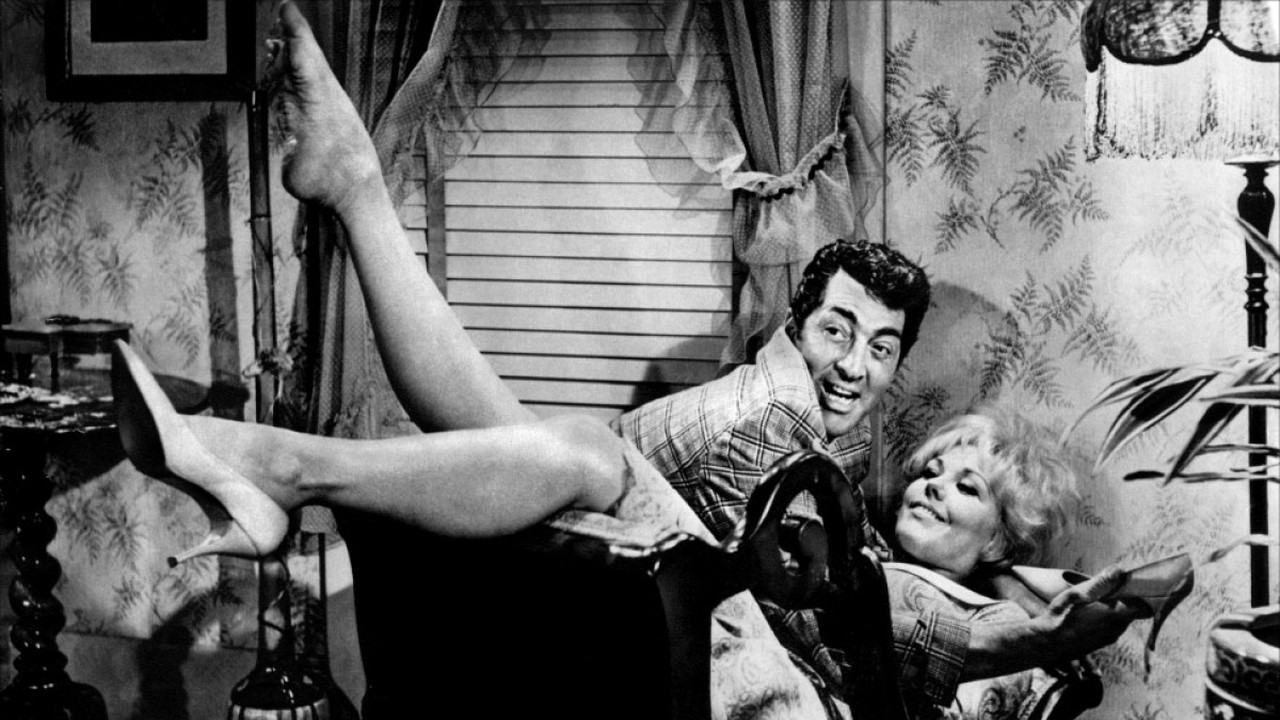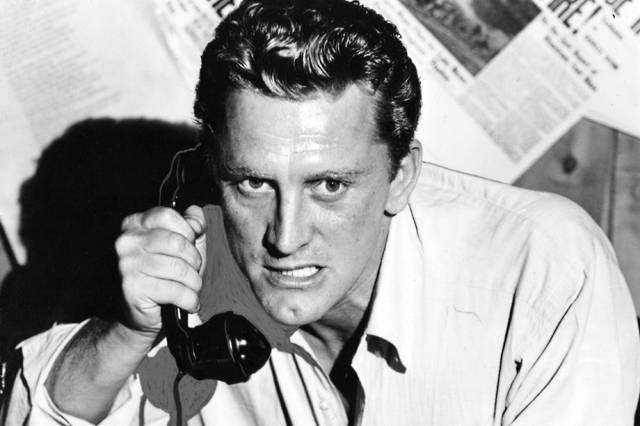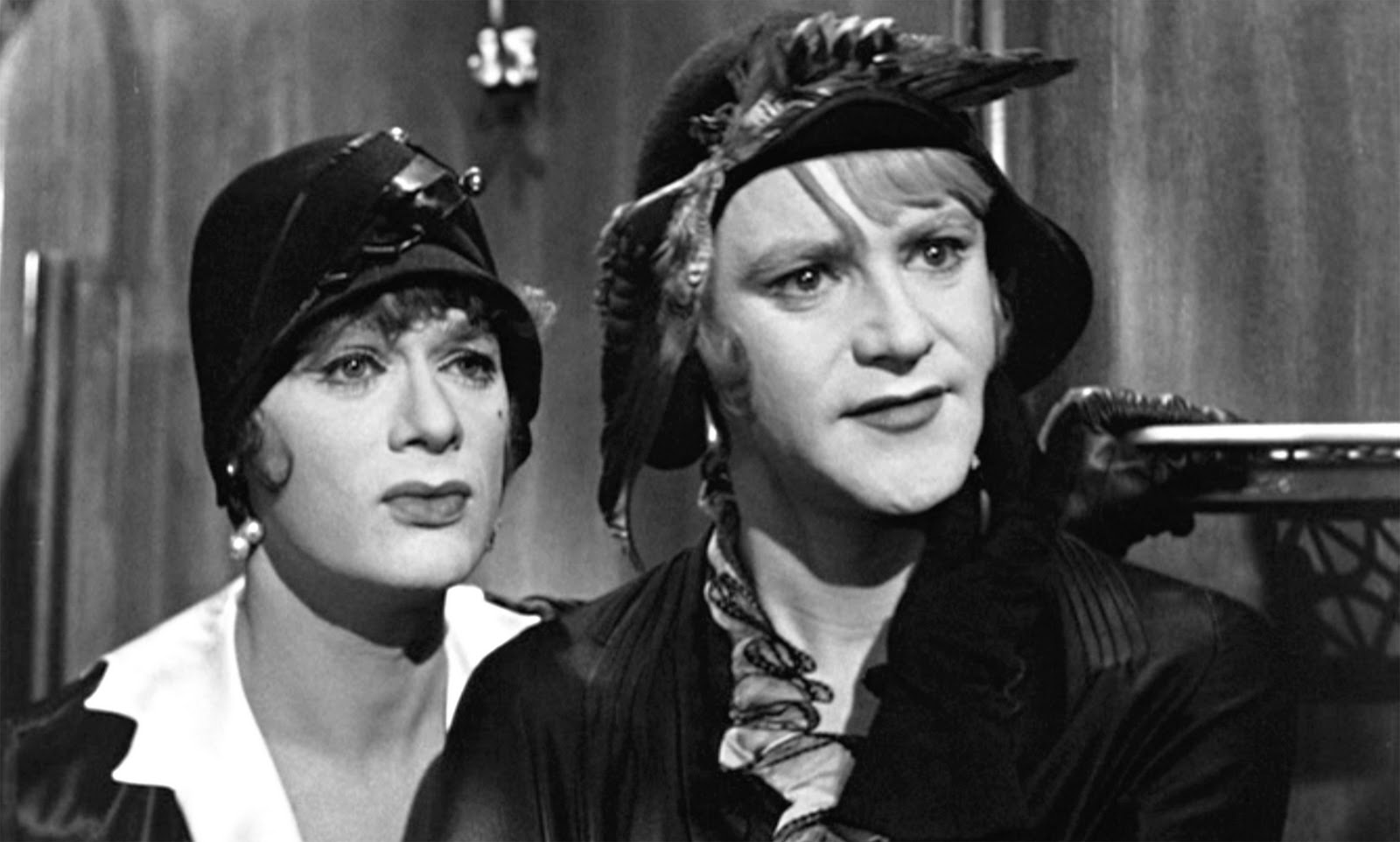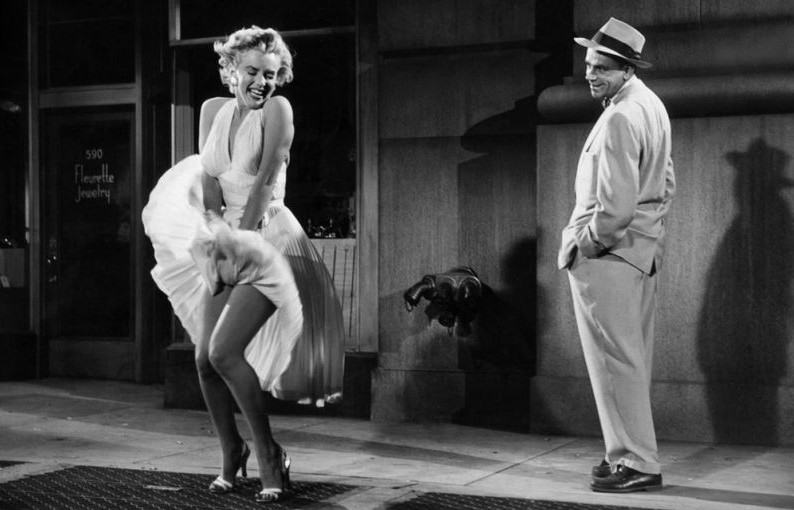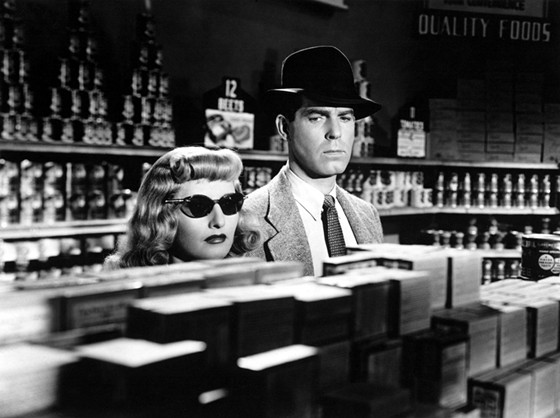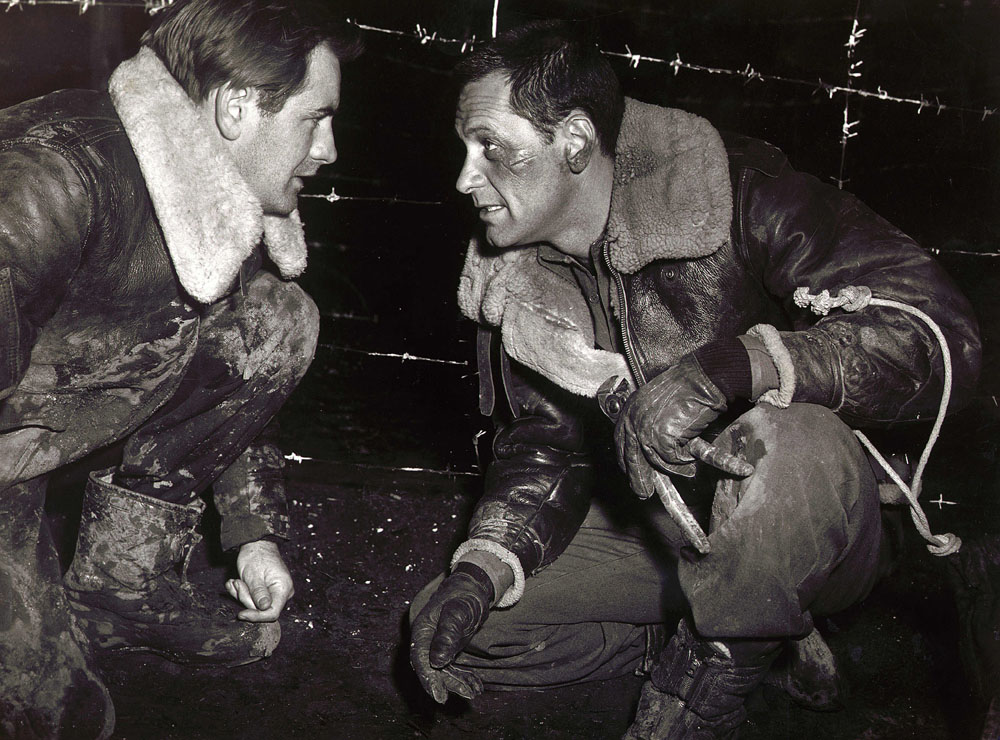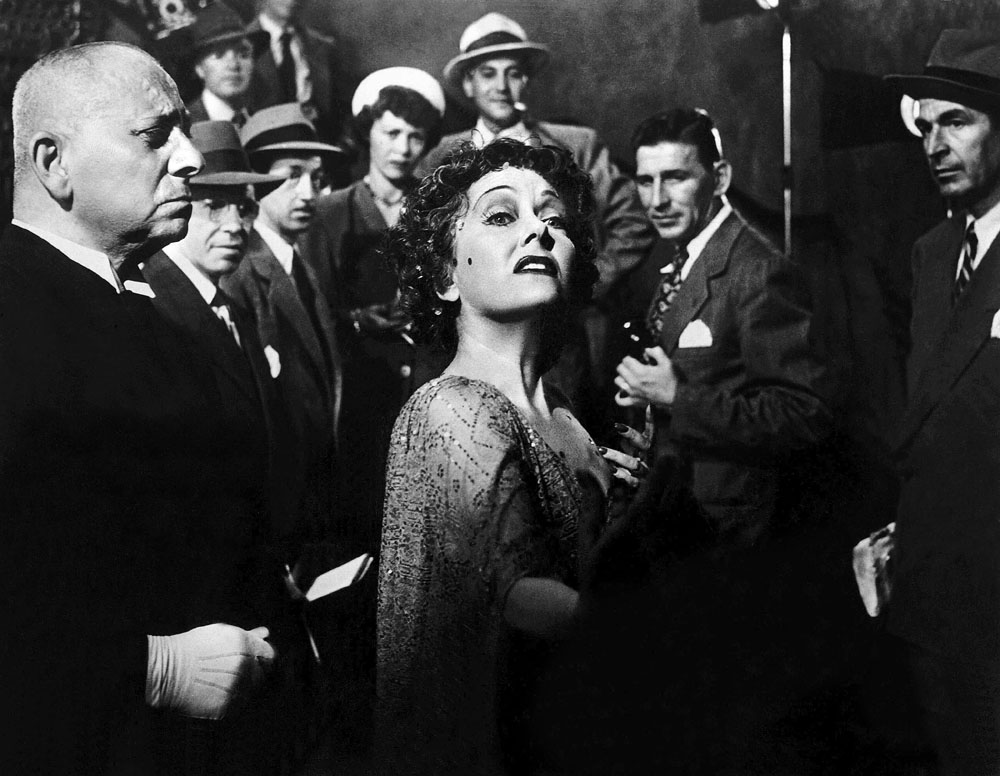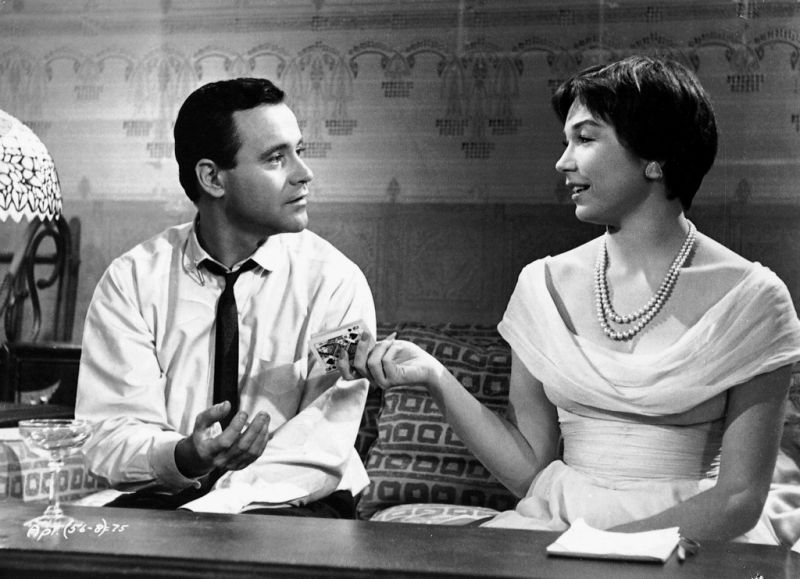8. Kiss Me, Stupid (1964)
On the completely opposite spectrum of romantic comedies comes Kiss Me, Stupid, the 1964 film that received such a violent rejection by audiences of the day that Wilder’s career began a commercial downturn from which it never really recovered. Based loosely on an Italian play by Anna Bonacci, Kiss Me, Stupid begins with singer Dino (Dean Martin) leaving Las Vegas after a performance at the Sands Hotel.
Driving to Los Angeles to do a TV special, Dino’s car breaks down in the tiny town of Climax, Nevada, where his car is waylaid by auto mechanic Barney (Cliff Osmond), who writes songs with local piano teacher Orville Spooner (Ray Walston) and who sees a chance to get their big break if Dino will sing one of their songs on his TV show. Orville realizes that the lusty Dino may be after his attractive wife Zelda (Felicia Farr) so Orville chases her away and instead hires local hooker Polly the Pistol (Kim Novak) to pose as Zelda and romance Dino for the night. Not surprisingly, Orville and Polly fall for each other, creating all kinds of complications.
Ripped at the time for its adult content, Kiss Me, Stupid now seems fairly tame by today’s standards, but reveals Wilder as a director willing to take risks to create a film that savagely undermined societal conventions of the playboy lifestyle as well as marriage and the happy American family. Kiss Me, Stupid hit too close to home for many at the time, but it is a Billy Wilder film that has aged well, with its manic pace and crackerjack dialogue. Now available on DVD, see Kiss Me, Stupid if you can.
7. Ace in the Hole (1951)
Like Kiss Me, Stupid, Ace in the Hole was an enormous commercial failure when it was released in 1951, and the bad reviews that the film received hurt Wilder’s career (although he recovered to make some of his biggest hits soon after). The story of a fallen New York reporter who has had to take a job at a small New Mexico newspaper, Chuck Tatum (Kirk Douglas) comes upon a hot story when he discovers a man named Leo Minosa has become trapped in a partially caved in mine and may have only a couple of days to live.
Although Leo could be easily rescued, Chuck convinces the corrupt local sheriff they must take the long way in so that he has more time to milk the story and get his New York job back. Leo’s faithless wife Lorraine (Jan Sterling) falls for Chuck and it appears that his plan will work until the drilling takes too long and Leo begins to die.
Ace in the Hole did much to attach the ‘cynic’ label to Wilder, but the film attacks the greed and corruption of the news media in ways that will not be seen again until Network in 1976 and thus seems very modern as we view it now, over sixty years later. Despite the negative reaction that it received on its release,
Ace in the Hole has had its reputation largely restored and enhanced in the years since, and now it is seen as one of Wilder’s most complex and unrelenting works. Jan Sterling gets the film’s best line when Chuck asks her if she believes in religion and she tosses of this gem: “I don’t go to church. Kneeling bags my nylons!” Revealing a true misunderstanding of the film’s bleak content, Paramount changed the title to The Big Carnival in the hopes that audiences would show up. It didn’t work, but Ace in the Hole remains a tribute to Wilder at his best.
6. Some Like it Hot (1959)
Wilder went separate ways with writing partner Charles Brackett after Sunset Boulevard, and for most of the 1950’s he had a new writer on each film. But in 1957, he teamed up with writer I.A.L. (Iz) Diamond, with whom he worked for the rest of his career.
In 1959, they turned out one of their best known and most successful films, the cross dressing comedy Some Like it Hot. Featuring Jack Lemmon and Tony Curtis as two down and out musicians in 1929 Chicago who accidentally witness the St. Valentine’s Day Massacre and who, to avoid being rubbed out themselves, go on the run to Florida in drag as members of a female band. The film also features one of Marilyn Monroe’s most famous performances as Sugar Kane, lead singer of the band, who has a weakness for saxophone players and yacht owning millionaires.
Shot on location at the Del Coronado Hotel in San Diego, Some Like it Hot was a big hit for Wilder and has continued to pick up devoted fans over the years, eventually being named the #1 comedy of all time by the American Film Institute. Tony Curtis does a wicked Cary Grant impersonation as the near sighted millionaire who woos Marilyn on his yacht, and that same year would co-star with Grant in another big hit, Operation Petticoat. Is this the perfect film? Well, as Joe E. Lewis says in the famous final shot of the film “Nobody’s perfect” but this movie come close.
5. The Seven Year Itch (1955)
Billy Wilder was the only director to have Marilyn Monroe star in two films for him (she appeared in two for John Huston, but her role in The Asphalt Jungle was small) and for working with the famously difficult Monroe twice, Wilder deserves kudos.
The first of these two films was based on a successful stage play, The Seven Year Itch, in which happily married man Richard Sherman (Tom Ewell) sees his wife and son go off for the summer only to have Monroe move in to the upstairs apartment during a torrid New York heatwave. Tempted by the beautiful blonde, Sherman envisions fantasy after fantasy in which he pursues the girl, as well as other fantasies about his wife’s faithlessness as well as what she will do if she catches her husband cheating with the girl upstairs.
A classic 1950’s film of sublimated lust and middle age male sexual yearning, The Seven Year Itch was a huge hit and should likely be considered the peak of Marilyn Monroe’s career. Unfortunately for her, trouble followed this film, as the shooting of the famous scene in which her skirt blows up as a subway train passes below caused husband Joe DiMaggio to become so outraged that their marriage fell apart. After completing The Seven Year Itch, Monroe went to New York to study at Lee Strasberg’s Actors Studio, and some said that her career was never the same. Thankfully, we can watch the pure comedic talents of Monroe is this film as often as we like!
4. Double Indemnity (1944)
Wilder took a break from working with writing partner Charles Brackett to team with hard boiled writer Raymond Chandler on Double Indemnity, which became a classic of the early film noir cycle and established many of the conventions of the genre. Fred MacMurray is Walter Neff, a life insurance salesman who makes the mistake of calling on Phyliss Dietrichson (Barbara Stanwyck) who is looking to get rid of her husband and sees an opportunity collect double indemnity on his insurance policy when he ‘accidentally’ falls off the back of a train.
But Barton Keyes (Edward G. Robinson) is investigating Phyliss’ claim and he is listening to Dietrichson’s daughter Lola (Jean Heather) who suspects her step-mother of foul play. Keyes eventually solves the crime, but he must overcome his reluctance to suspect his friend Neff before he can actually see things straight.
With hard boiled lines such as “Straight down the line, baby”, Double Indemnity became the essential early film noir by which all the others were judged. Wilder shot an alternative ending to the film in which Walter Neff goes to the gas chamber for his criminal collaboration with Phyliss, but he decided not to use. The entire story is recounted by Neff to Keyes as he lies dying, and the voice over flashback technique became a staple of film noir. A must see classic of hard boiled forties films.
3. Stalag 17 (1953)
Trying to rebound from the failure of Ace in the Hole, Wilder picked a property that he been a hit on Broadway and that he felt would translate well to the screen despite the fact that there were virtually no female characters (when someone asked him why he had bought the property, Wilder shrugged his shoulders and replied: “Men running around in their underwear!”)
Stalag 17 is the story of J.J. Sefton (William Holden), a prisoner in a German P.OW. camp who is trading with his captors in order to ensure a comfortable existence. He is suspected by his fellow P.O.W.’s of being an informant who is giving the Germans information on escape attempts, one of which has resulted in the killing of two Americans. Sefton eventually ferrets out who the real informant is and figures out a brilliant way to reveal him, but not before he is brutally beaten by his fellow prisoners for what they perceive he has done.
An enormous hit, frequent Wilder collaborator William Holden won the best actor Academy Award for his performance as Sefton in the film. Featuring a great supporting cast, including Peter Graves, Robert Strauss (as “Animal”), Don Taylor and Otto Preminger as the sadistic camp commandant, Von Scherbach. Typical of many of Wilder’s films, Stalag 17 put a humorous face on grim subject matter and remains a memorable film in an otherwise extraordinary career.
2. Sunset Boulevard (1950)
Now so iconic, it is hard to imagine a time when Sunset Boulevard was considered a harsh indictment of the film community. Joe Gillis (William Holden) is a down on his luck screenwriter, desperate to sell a script to the studio. Kicked out of his apartment and on the run from two guys trying to repossess his car, Gillis ends up at the home of silent movie star Norma Desmond (played by real life silent movie star Gloria Swanson).
Gillis becomes a ‘kept man’, ostensibly writing Desmond’s script for her comeback vehicle while living in her gothic Hollywood home with creepy butler Max (Eric Von Stroheim). He tries to break away from Norma when fresh young studio reader Betty Schaefer (Nancy Olson) takes an interest in a script he has written (and eventually in Gillis himself) but his efforts to extract himself from the spider web are doomed.
The ending sequence, with Gillis shot dead in a swimming pool and the deranged Desmond spouting “I’m ready for my close up now, Mr. De Mille!” for the newsreel cameras is very well known, but Wilder also conceived of an opening in which the dead Gillis narrates the film in flashback after being deposited in a morgue, telling his story to the other dead bodies.
After a bad audience preview he decided to (wisely) do away with this ghoulish approach and the film was a huge success on its release. Sunset Boulevard is one of Wilder’s darkest and harshest films, stripping away the facade of the illusion of the Hollywood happy ending and revealing a world of broken dreams that is rotten to the core. Wilder, who died in 2006, lived long enough to see his iconic film transformed into a hit Broadway musical.
1. The Apartment (1960)
One book I read on Wilder once noted: “Billy Wilder is a European at heart.” Wilder certainly seemed to distrust the American corporate lifestyle, and nowhere is that more evident than in his ultimate film, The Apartment, which won the Academy Award for best picture in 1960 (besting Alfred Hitchcock again, who was nominated for Psycho).
Jack Lemmon is C.C. ‘Buddy Boy’ Baxter, a young accountant in a huge insurance company, who is letting a group of executives use his office for their extra-marital trysts in order to ingratiate himself. He has an unrequited crush on elevator operator Fran Kubelick (Shirley MacLaine) who is having an affair with the big boss, J.D. Sheldrake (Fred MacMurray). When Sheldrake finds out what Baxter is doing, he forces the young accountant to freeze out the others so that he and Miss Kubelik can use the apartment for themselves, which works out well until her ill timed suicide attempt in Baxter’s bed reveals the whole sordid situation.
The Apartment was such a brilliant movie, so far ahead of its time in revealing the falseness behind the mask of respectability of American corporate offices, the hypocrisy of martial infidelity and the anguish of sexual harassment, that one can only sit back and marvel at it now, over fifty years later. As typical of Wilder, he contrasts the cold, vertical American corporate office setting with Baxter’s cozy apartment, European in its style. Can Baxter and Miss Kubelik escape from the soul numbing corporate world and find true love? See the movie to find out. The Apartment is a clinic in great scriptwriting, acting and direction. It remains Wilder’s greatest accomplishment and a film that should be seen often not just for its style, but for its content as well.
Author Bio: Jim Davidson is a 1980 graduate of Northwestern University’s Radio-TV-Film Dept. He lives in the San Francisco Bay Area and has been a video producer since 1987. Jim has written articles for Images Film journal and is currently working on a book about the movie Harold and Maude.
